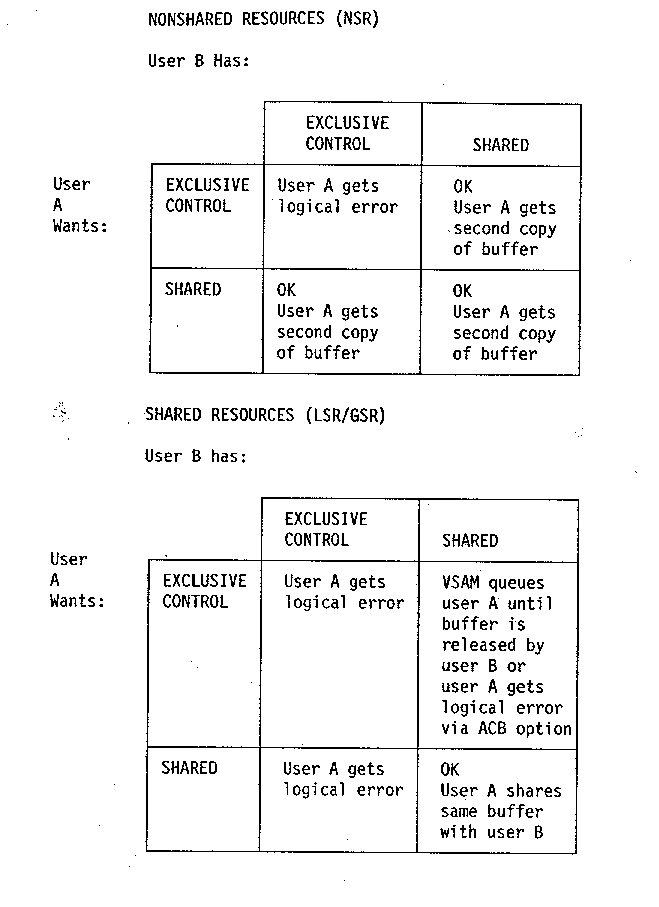 z/OS DFSMS Using Data Sets
z/OS DFSMS Using Data Sets
 z/OS DFSMS Using Data Sets
z/OS DFSMS Using Data Sets
|
Previous topic |
Next topic |
Contents |
Contact z/OS |
Library |
PDF
Resolving Exclusive Control Conflicts z/OS DFSMS Using Data Sets SC23-6855-00 |
|
|
In this environment with a single control block, VSAM record management serializes updates to any single control interval and provides read and write integrity. When a control interval is not available for the type of user processing requested (shared or exclusive), VSAM record management returns a logical error code with an exclusive control error indicated in the RPL feedback code. When this occurs, you must decide whether to retry later or to free the resource causing the conflict. See Figure 1 for a diagram of exclusive control conflict feedback and results of different user requests. Figure 1. Exclusive Control Conflict Resolution
 By default, if an exclusive control conflict is encountered, VSAM defers the request until the resource becomes available. You can change this by using the VSAM avoid LSR error control wait function. By using the NLW subparameter of the MACRF parameter for the ACB macro, instead of deferring the request, VSAM returns the exclusive control return code 20 (X'14') to the application program. The application program can then determine the next action. Alternatively, you can do this by changing the GENCB ACB macro in the application program. To test to see if the new function is in effect, the TESTCB ACB macro can be coded into the application program. The application program must be altered to handle the exclusive control error return code. Register 15 will contain 8 and the RPLERRCD field will contain 20 (X'14'). The address of the RPL that owns the resource is placed in the first word in the RPL error message area. The VSAM avoid LSR exclusive control wait option cannot be changed after OPEN. 


|
 Copyright IBM Corporation 1990, 2014 Copyright IBM Corporation 1990, 2014 |